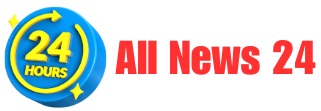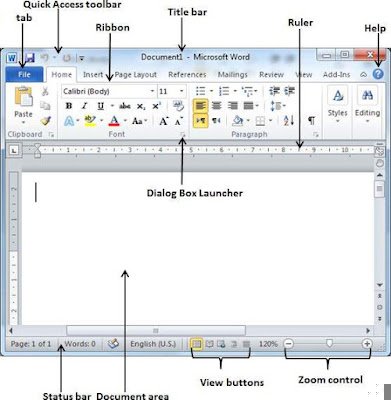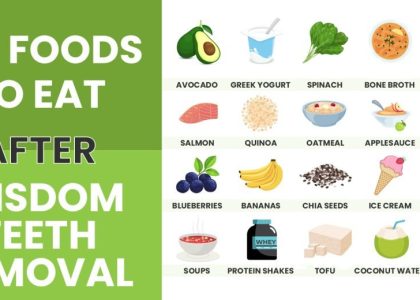If you’re wondering what elements do not belong to the menu bar in Microsoft Office Word 2010, you’re not alone. The menu bar primarily comprises familiar options like File, Edit, and View, but some features don’t fit into this category.
Berikut ini yang tidak termasuk menu bar dalam microsoft office word 2010 adalah the Ribbon, which offers a different layout for tools and commands. Understanding the structure of Word 2010 can improve your efficiency, making your writing and formatting tasks easier and more intuitive.
Berikut Ini Yang Tidak Termasuk Menu Bar Dalam Microsoft Office Word 2010 Adalah
Microsoft Office Word 2010 is a powerful word processing application that has been widely used for various document creation tasks. While many users are familiar with the extensive features and menus within Word, not all components belong to the menu bar. In this article, we will explore what does not belong to the menu bar in Microsoft Office Word 2010, while also detailing the structure of the Word interface and its various elements. Understanding these components will help users navigate the application with greater ease and efficiency.
Understanding the Menu Bar in Microsoft Office Word 2010
The menu bar is a critical part of Microsoft Office Word that provides users with access to a variety of commands and features. In Word 2010, the menu bar is prominently displayed at the top of the window.
- File: This menu lets users open, save, print, and share documents.
- Edit: While this feature has evolved, it typically includes commands like undo, redo, and find.
- View: This allows users to change the layout of their document and control what elements are visible on the screen.
- Insert: Users can add various elements such as tables, images, and text boxes through this menu.
- Format: This menu provides options for modifying the appearance of text, including font styles and paragraph alignment.
However, not everything in the Word application is part of this menu bar. Now, let’s take a closer look at what does not belong to the menu bar.
Elements Excluded from the Menu Bar
When using Microsoft Word 2010, it is essential to recognize elements that aren’t part of the menu bar. Understanding these distinctions enhances usability and helps streamline your workflow. Here are the main elements that are commonly confused with the menu bar but do not belong to it:
The Ribbon
The Ribbon is a feature introduced in Word 2007 and continued in Word 2010. It contains a set of toolbars organized into tabs. The Ribbon replaces the traditional menu bar and offers users access to many features in a more visual format. Here’s how the Ribbon differs:
- Organized by Tabs: The Ribbon consists of multiple tabs like Home, Insert, Page Layout, and References. Each tab houses specific commands related to the tasks you want to accomplish.
- Quick Access Toolbar: Located above the Ribbon, this is customizable and allows users to quickly access frequently used commands.
- Contextual Tabs: These appear only when specific objects are selected, offering relevant tools to help modify the selected element.
The Status Bar
The Status Bar is located at the bottom of the Word window. It does not serve as a traditional menu but provides essential information about the document you’re working on. It includes:
- Page Number: Displays the current page you are on.
- Word Count: Shows the total number of words in your document.
- Language Indicator: Indicates the language being used in the document.
Task Pane
The Task Pane is another element distinct from the menu bar. It provides additional options related to specific tasks or tools. You can find various task panes such as:
- Styles Pane: Helps you manage styles and formatting in your document.
- Navigation Pane: Allows users to easily navigate through headings, pages, and search results.
- Clip Art Task Pane: Provides access to clip art and other media.
Dialog Boxes
These are pop-up windows that appear when you select particular commands. Dialog boxes prompt users for additional information or options. They do not form part of the menu bar but are crucial for customizing settings. For example:
- Font Dialog Box: Allows you to adjust font types, sizes, styles, and effects.
- Paragraph Dialog Box: Offers options for paragraph formatting, including indents and spacing.
Identifying Common Misunderstandings
Many users can have misconceptions about the interface elements in Microsoft Word. Some think that features located outside the menu bar are part of it. Here are a few common misunderstandings:
Confusion Between Ribbon and Menu Bar
The Ribbon replaces the traditional menu bar. Users often mistakenly refer to the Ribbon as the menu bar due to its similar function of housing commands. However, recognizing that the Ribbon is actually a more evolved interface will help users utilize its capabilities effectively.
Status Bar Importance
While the Status Bar is useful for providing feedback, it is not part of the menu system. Many users overlook its features and thus miss useful information while working on their documents.
Dialog Boxes vs. Menu Options
Dialog boxes can be daunting for beginners. They pop up when a user selects a feature, and they require completing additional fields. Recognizing them as part of the interaction process with other features may help ease new users.
Navigating Microsoft Word 2010 Effectively
To maximize your experience in Microsoft Word 2010, it is crucial to understand the layout and functionality of the various elements. Here are some tips for navigating the application effectively:
Use the Ribbon Wisely
Familiarize yourself with the different tabs in the Ribbon. Each tab is geared towards specific tasks. For example, the Home tab includes basic editing tools, whereas the Insert tab focuses on adding new elements.
Customize Your Quick Access Toolbar
You can personalize the Quick Access Toolbar by adding commonly used commands. This customization helps you speed up your workflow. To add commands, simply click on the drop-down arrow in the Quick Access Toolbar and select the options you frequently use.
Explore the Task Panes
Task panes are a valuable asset, especially when dealing with more complex documents. Spend some time exploring different task panes available and how they enhance your productivity. You’ll find tools that simplify formatting and organizing your content.
Leverage Keyboard Shortcuts
Using keyboard shortcuts can significantly boost your productivity. For example, pressing Ctrl + C copies selected text, and Ctrl + V pastes it. Familiarize yourself with common shortcuts to reduce reliance on the mouse and speed up your work process.
Understanding what does and does not belong to the menu bar in Microsoft Office Word 2010 can enhance your ability to navigate the application effectively. By recognizing the importance of the Ribbon, Status Bar, Task Panes, and Dialog Boxes, you can utilize Word more efficiently. As you explore these features, remember that practice and familiarity are key to mastering any software. Embrace the learning process, and you will create documents with ease and confidence.
Penjelasan Lengkap Fungsi dari Menu Microsoft Word | Tutorial Word
Frequently Asked Questions
“`html
What are the main components of the menu bar in Microsoft Office Word 2010?
The menu bar in Microsoft Office Word 2010 consists of several key components, including the File, Home, Insert, Page Layout, References, Mailings, Review, and View tabs. Each tab contains a variety of commands and features related to that specific area of functionality, allowing users to access tools quickly and efficiently.
How can I customize the menu bar in Word 2010?
You can customize the menu bar in Word 2010 by right-clicking on the ribbon and selecting “Customize the Ribbon.” From there, you can add or remove tabs and commands according to your preferences, allowing you to create a more personalized workspace that fits your workflow.
Are there any keyboard shortcuts for accessing menu bar options in Word 2010?
Yes, Word 2010 offers several keyboard shortcuts to access menu bar options. For example, you can press the Alt key to activate the ribbon shortcuts, and then press the corresponding letter assigned to each tab (e.g., Alt + H for Home, Alt + N for Insert). This method allows you to navigate quickly without using the mouse.
What features does the quick access toolbar provide in Word 2010?
The Quick Access Toolbar in Word 2010 provides easy access to frequently used commands such as Save, Undo, and Redo. You can customize this toolbar by adding or removing commands, making it a convenient tool for enhancing productivity while working on documents.
Can I reset the menu bar to its default settings in Word 2010?
Yes, you can reset the menu bar to its default settings in Word 2010. To do this, go to the “File” tab, select “Options,” then click “Customize Ribbon.” From there, you will find an option to reset the ribbon to its default settings, reinstating the original layout and commands.
“`
Final Thoughts
Berikut ini yang tidak termasuk menu bar dalam Microsoft Office Word 2010 adalah beberapa fitur yang sering kali disalahartikan. Misalnya, elemen seperti toolbar, ribbon, dan task pane bukan bagian dari menu bar. Menu bar berfungsi sebagai lokasi akses untuk berbagai perintah dan fungsi penting. Memahami perbedaan ini membantu pengguna lebih efektif dalam menggunakan Word 2010.






